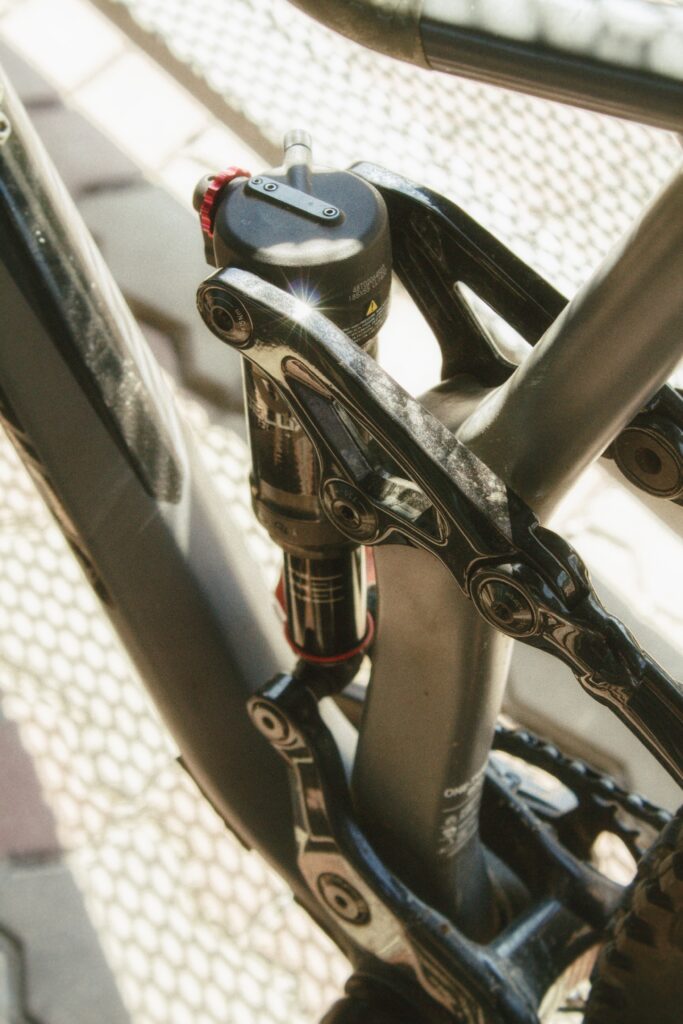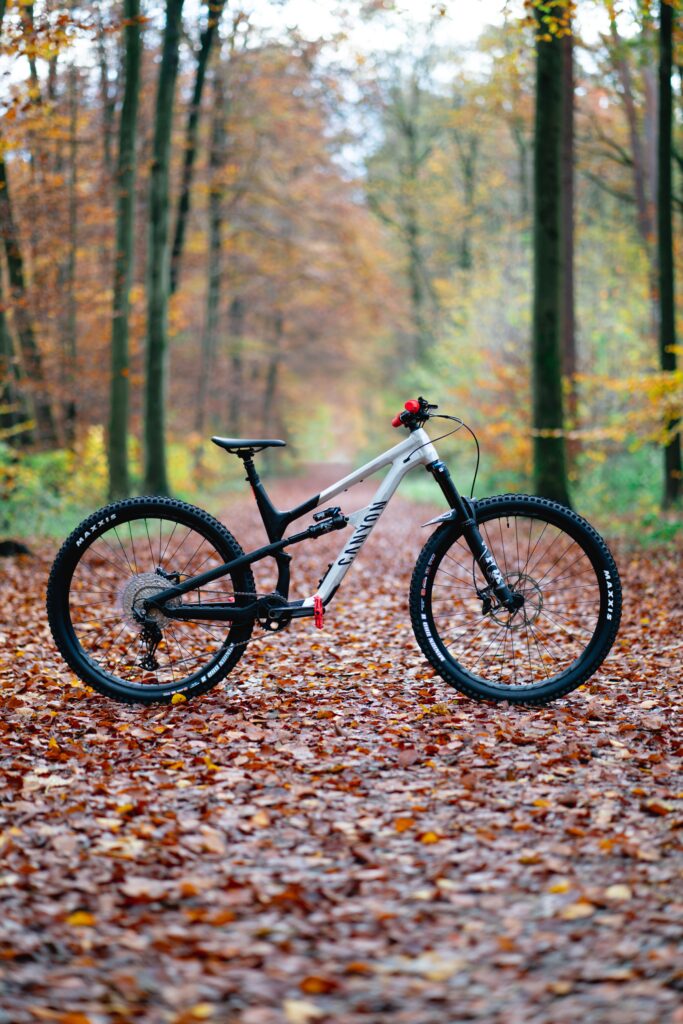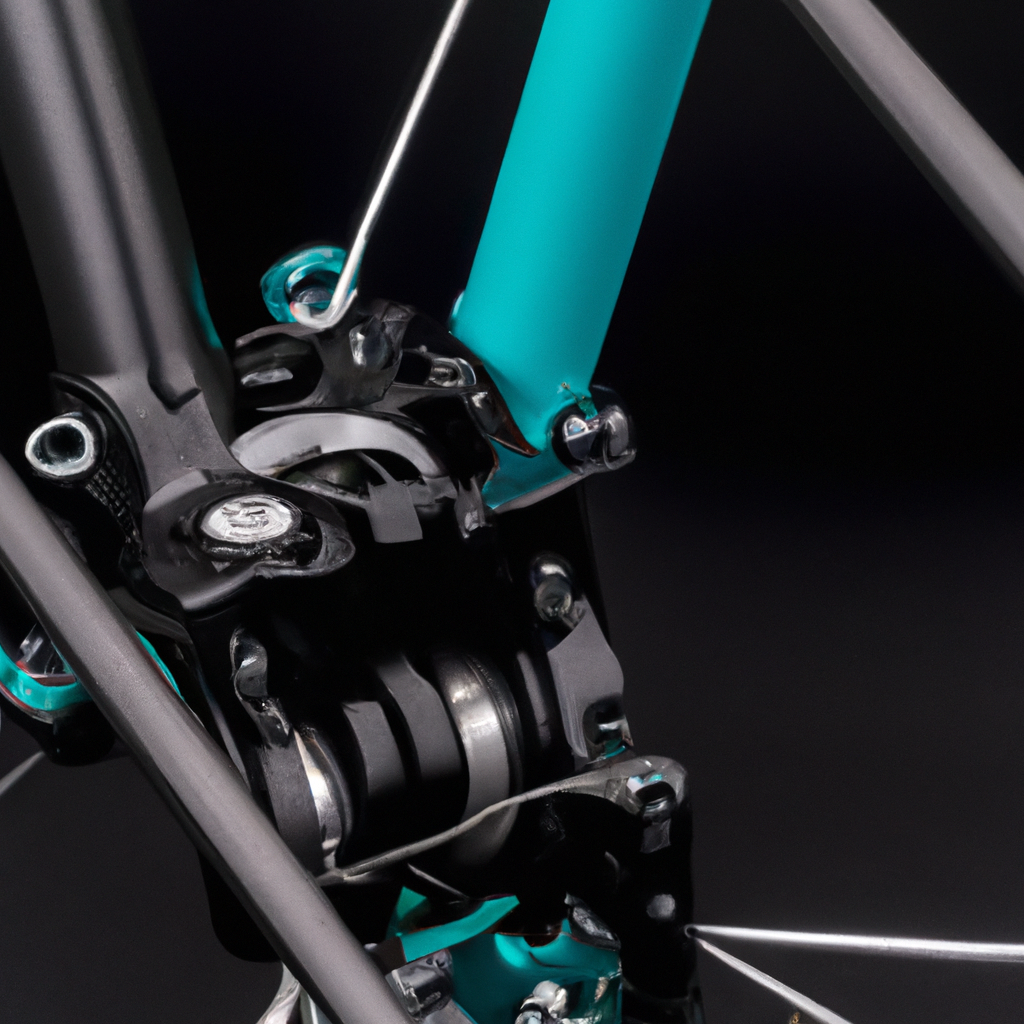Hey there, E-Bike enthusiasts! Welcome to our “Advanced E-Bike Riding Tips” section, where we dive into the intricacies of e-biking. In this dedicated space, we go beyond the basics to provide intermediate to advanced riders with valuable insights and techniques that will take their e-biking adventures to the next level. Today, we want to discuss the topic of fine-tuning e-bike suspension for optimal riding. For those serious about e-biking, understanding the complexities of suspension and how to optimize it can make a world of difference in your riding experience. So, whether you’re tackling rough terrains or looking for a smoother and more comfortable ride, get ready to explore the ins and outs of fine-tuning e-bike suspension.

Introduction to E-Bike Suspension
Hey there, e-bike enthusiasts! Today, we’re diving into the fascinating world of e-bike suspension. Suspension is a crucial component of any e-bike, and understanding its importance and different types can greatly enhance your riding experience.
Understanding the importance of suspension in e-bikes
Suspension plays a vital role in absorbing shocks and vibrations from the terrain, ensuring a smooth and comfortable ride. Without proper suspension, riding an e-bike can be a jarring experience, causing fatigue and potentially even injuries. Suspension helps to maintain traction, control, and stability, allowing you to confidently conquer various terrains and obstacles.
Types of suspension systems for e-bikes
There are two main types of suspension systems commonly found on e-bikes: front suspension and full suspension.
Front suspension, also known as hardtail, refers to bikes that have suspension only on the front fork. This setup is ideal for riders who prioritize efficiency and lighter weight, as it allows for more efficient pedaling while still providing some level of comfort and control.
On the other hand, full suspension e-bikes have suspension on both the front fork and the rear. This setup offers enhanced comfort, traction, and control by absorbing shocks not only at the front, but also at the rear wheel. Full suspension is particularly beneficial for riders who tackle rough terrains, downhill descents, or engage in e-bike racing.
Factors to Consider for Fine-Tuning Suspension
To optimize your e-bike’s suspension for your riding style and preferences, there are several factors to take into consideration.
Rider weight and body position
Your weight and body position on the bike significantly affect how the suspension performs. Heavier riders may require more preload or firmer suspension settings to prevent excessive sag and bottoming out. Additionally, your riding style and preferences, such as aggressive or more relaxed riding, also influence how your body weight is distributed on the bike and impact the suspension’s performance.
Terrain and riding style
The type of terrain you ride on and your riding style should inform your suspension adjustments. For rough, technical trails, more suspension travel and softer settings may be necessary to absorb larger impacts and maintain control. Conversely, for smoother surfaces or higher-speed riding, setting the suspension to be slightly firmer can improve efficiency and prevent excessive bouncing or energy loss.
Weather conditions and temperature
Temperature and weather conditions can affect the performance of your suspension. In colder temperatures, suspension fluids can become thicker, impacting the damping performance. Conversely, in hot weather, fluids may become thinner, potentially causing the suspension to feel softer than desired. It’s important to take these factors into account and make necessary adjustments to maintain optimal suspension performance.
Choosing the Right Suspension Setup
Selecting the appropriate suspension setup for your e-bike requires careful consideration of various factors.
Determining the appropriate suspension travel
The amount of suspension travel you need depends on the type of riding you do. If your focus is on smoother surfaces and more efficient riding, a shorter travel suspension may be suitable. For riders who tackle rougher terrains or engage in extreme riding, a longer travel suspension setup can provide the necessary comfort, control, and confidence.
Optimal sag setting
Sag refers to the amount the suspension compresses under the rider’s weight when sitting on the bike. It is crucial to set the sag correctly to ensure the suspension is working at its best. A general rule of thumb is to aim for around 25-30% sag for most e-bike applications. This allows the suspension to activate fully and absorb impacts without bottoming out or feeling too firm. However, it’s important to consult your e-bike manufacturer’s guidelines and adjust the sag according to their recommendations.
Adjusting rebound and compression damping
Rebound and compression damping are two essential factors in fine-tuning your suspension’s performance.
Rebound damping controls how fast the suspension extends after compressing. A faster rebound damping setting can provide quicker recovery and enhance traction on rough terrains. On the other hand, a slower rebound damping setting can offer more stability and control.
Compression damping controls how the suspension compresses when encountering impacts. Adjusting compression damping allows you to fine-tune the suspension’s responsiveness and control. Increasing compression damping can improve pedaling efficiency and prevent excessive diving under braking, while decreasing it can enhance small bump compliance and traction.
Setting Suspension Sag
What is suspension sag?
Suspension sag is the amount of suspension travel used when the rider is sitting on the bike in their riding position. It ensures that the suspension is properly preloaded to respond to impacts and maintain traction.
Step-by-step guide to setting sag
- Start by ensuring your e-bike is properly set up and ready to ride, with correct tire pressure and suspension settings.
- Find a smooth, level surface and prepare to measure the sag.
- Position yourself on the bike in your riding position, applying your usual weight distribution.
- Have a helper measure and record the distance between the rear axle and a fixed point on the bike, typically the seat tube.
- Carefully dismount the bike without changing the suspension’s position.
- Measure the distance between the rear axle and the fixed point again.
- Calculate the difference between the two measurements, which represents the sag.
- Adjust the preload or spring tension on your suspension until the sag is within the recommended range, typically around 25-30% of total suspension travel.
- Repeat the process a few times, making small adjustments as necessary, until you achieve the desired sag setting.
Common mistakes to avoid
When setting sag, it’s important to avoid some common mistakes that can impact your suspension’s performance:
- Forgetting to measure sag with proper riding gear, such as a backpack or water bottle.
- Neglecting to adjust the suspension preload or spring tension to achieve the recommended sag.
- Using an incorrect measuring point, leading to inaccurate sag measurements.
- Failing to consult your e-bike manufacturer’s recommendations for the ideal sag setting.

Rebound Damping Adjustment
Understanding rebound damping
Rebound damping controls how quickly the suspension extends after compressing and determines the speed at which the suspension rebounds from impacts. It plays a crucial role in maintaining control, traction, and comfort.
How to adjust rebound damping
Adjusting rebound damping requires finding the right balance between too fast and too slow rebound speeds. Here’s how you can fine-tune rebound damping:
- Start by setting the rebound damping to the midpoint of its adjustment range.
- Take your e-bike for a test ride on various terrains, including both smooth and rough surfaces.
- Pay attention to how the e-bike reacts after encountering bumps or obstacles.
- If the suspension extends too quickly and you feel as if the bike is being kicked back, increase rebound damping.
- If the suspension feels slow to recover or feels harsh when encountering multiple impacts, decrease rebound damping.
- Make small adjustments to the rebound damping and continue testing until you find the setting that provides optimal control, traction, and comfort for your riding style and the terrain you ride on.
Fine-tuning rebound damping for specific terrains
Different terrains may require different rebound damping settings. Here are some general guidelines:
- For smoother surfaces, a slightly faster rebound damping setting can help maintain grip and prevent the suspension from packing down.
- On rough, technical terrains, a slightly slower rebound damping setting can enhance control and stability, preventing the suspension from getting overwhelmed by frequent impacts.
Remember, personal preferences and riding style also contribute to finding the ideal rebound damping setting. Continuously experiment and adjust as needed to achieve the best performance.
Compression Damping Adjustment
Understanding compression damping
Compression damping controls how the suspension compresses when encountering impacts. It helps prevent bottoming out, excessive diving during braking, and optimizes pedaling efficiency.
How to adjust compression damping
Fine-tuning compression damping allows you to customize the suspension’s responsiveness and behavior to suit your riding style and preferences. Here’s how you can adjust compression damping:
- Begin by setting the compression damping to the midpoint of its adjustment range.
- Ride your e-bike on various terrains, paying close attention to how the suspension feels during different scenarios, such as hard braking, hopping over obstacles, or accelerating.
- If the front suspension dives excessively during braking or the rear suspension feels too soft and wallowy, increase compression damping.
- If the suspension feels overly firm, prevents the wheels from tracking the terrain, or affects small bump compliance negatively, decrease compression damping.
- Gradually make adjustments to the compression damping, testing the suspension’s behavior after each adjustment, until you find the ideal setting that enhances both control and performance.
Fine-tuning compression damping for optimal performance
The compression damping setting can be further fine-tuned for specific riding conditions:
- On smoother terrains or high-speed riding, slightly firmer compression damping can improve efficiency and prevent excessive energy loss through suspension movement.
- On rough, technical trails with larger impacts, softer compression damping can optimize traction and allow the suspension to absorb uneven terrain more effectively.
Remember, every rider is unique, and personal preferences play a significant role in finding the ideal compression damping setting for optimal performance.

Additional Suspension Tuning Techniques
In addition to sag, rebound damping, and compression damping adjustments, there are a few other techniques you can use to fine-tune your e-bike’s suspension.
Preload adjustment
Some suspension systems offer preload adjustment, which allows you to adjust the initial tension on the suspension spring. Preload primarily affects the sag and initial responsiveness of the suspension. By increasing preload, you can add stiffness to the suspension, preventing excessive sag for heavier riders or when carrying extra gear.
Air pressure tuning
For air-sprung suspension systems, adjusting the air pressure can significantly impact the suspension’s performance. Lower air pressure can provide a more compliant and sensitive feel, whereas higher air pressure offers increased support and progression.
Lockout functionality
Many modern e-bike suspension forks and shocks come equipped with a lockout feature. Locking out the suspension can be useful when riding on smooth surfaces, climbing, or when maximum efficiency is desired. However, remember to unlock the suspension when encountering rough terrains or descents to ensure optimal performance and control.
Maintenance and Care for E-Bike Suspension
To ensure that your e-bike suspension performs at its best and lasts a long time, regular maintenance and care are essential.
Regular cleaning and inspection
After every ride, make it a habit to clean your e-bike thoroughly, paying attention to the suspension components. Use a soft brush or cloth to remove any dirt or debris that may have accumulated. Regularly inspect the suspension for any signs of damage, leaks, or excessive wear. Address any issues promptly to prevent further damage or compromised performance.
Lubrication and greasing
Maintaining proper lubrication is crucial for the smooth operation of your e-bike’s suspension. Apply a high-quality lubricant to the suspension joints, pivots, and stanchions as recommended by the manufacturer. Additionally, periodically check and apply grease to any suspension seals or o-rings to ensure they remain effective in keeping out dirt and moisture.
When to service or replace suspension components
E-bike suspension components are subjected to wear and tear over time. While regular maintenance can prolong their lifespan, there may come a point when suspension components require servicing or replacement. Signs of worn-out or damaged suspension components include excessive play, oil leakage, reduced performance, or a noticeable change in behavior. Consult your e-bike manufacturer’s guidelines and seek professional assistance when necessary to ensure safe and optimal performance.

Conclusion
Congratulations, you’ve delved into the world of fine-tuning e-bike suspension! By understanding the importance of suspension, considering various factors, and knowing how to adjust sag, rebound damping, and compression damping, you can optimize your e-bike’s performance and have a fantastic riding experience.
Remember, finding the ideal suspension setup is a process of experimentation and continuous learning. Don’t be afraid to make small adjustments, test your e-bike on different terrains, and listen to your body’s feedback. At the end of the day, it’s all about enjoying the ride and discovering what works best for you. Happy e-biking!




